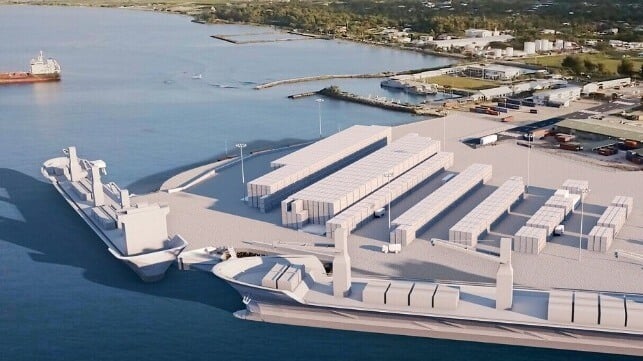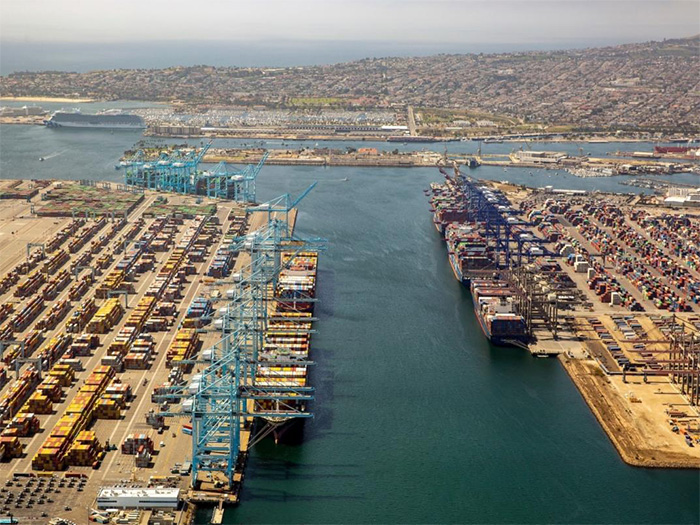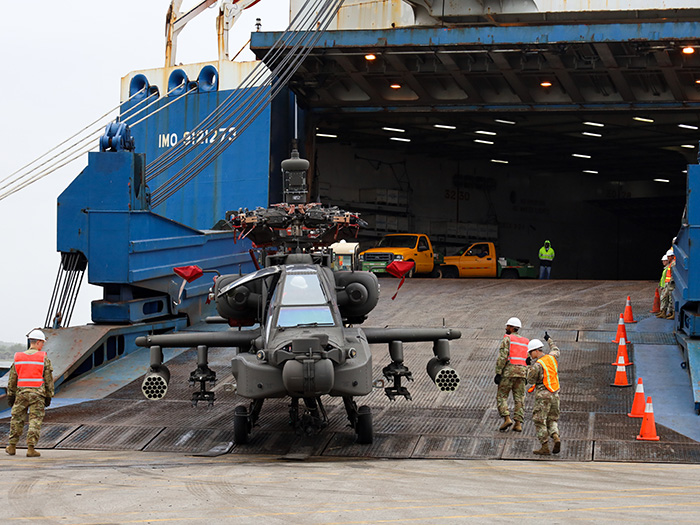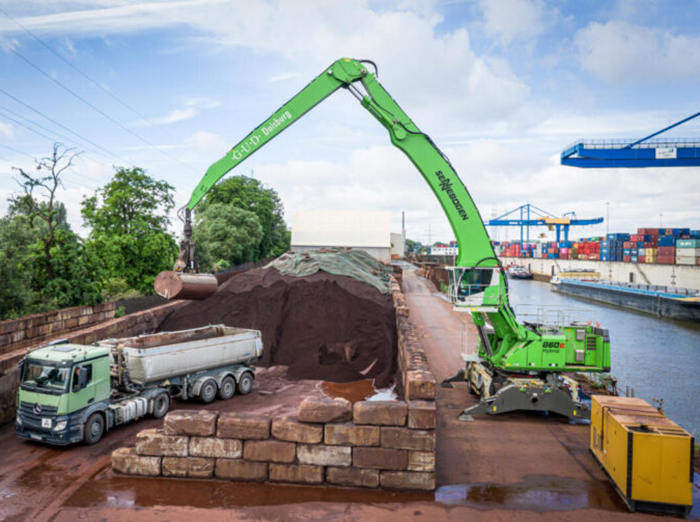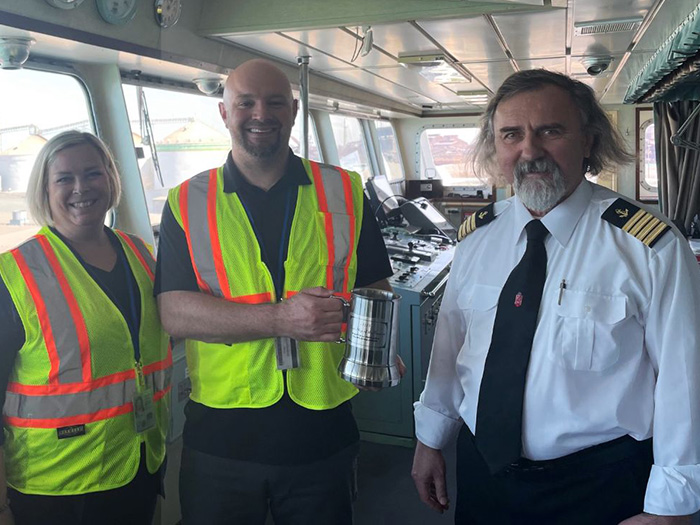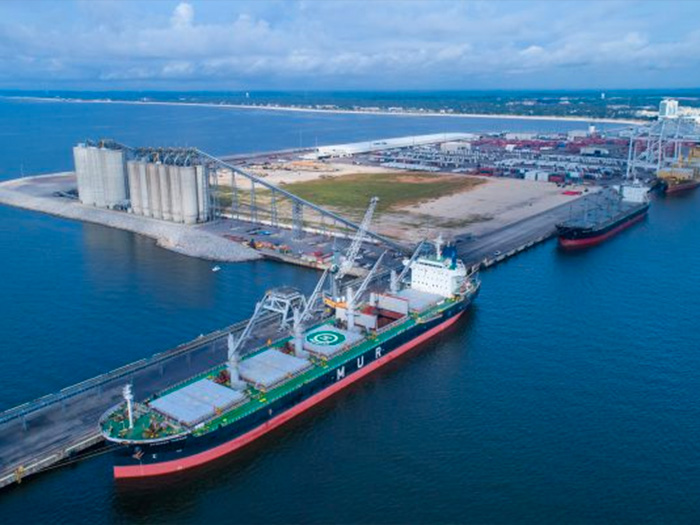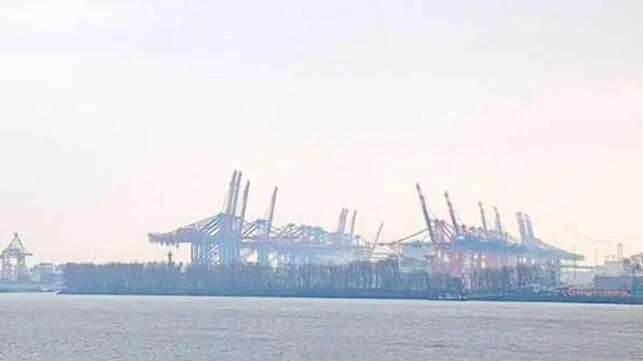
Without protection, a submerged steel surface will gradually corrode. That is why steel quay walls are generally fitted with sacrificial anodes, which draw rust away from the steel itself. There is an alternative protection method, however: using anodes that are charged with ‘impressed current’. At the HES Hartel Tank Terminal in the port of Rotterdam, no fewer than 2 km of steel quay wall are currently being protected via this method, which is more sustainable and ‘smarter’ than conventional anodes.
Sustainable solution prevents corrosion of quay walls
The problem has been a subject of debate ever since wood replaced metal as the shipping sector’s primary construction material in the 19th century: how can we protect our vital metal structures against the ravaging effects of corrosion – better known as ‘rust’. This natural process slowly but surely eats away at metal surfaces. If not counteracted, it eventually gets the better of any metal structure. Fortunately, in 1824 the British chemist Sir Humphrey Davy discovered a method through which to halt the corrosion process on ships’ hulls. His solution? Simply attach blocks of soft iron to the copper cladding of the ship’s hull. The least noble of the two metals – the soft iron – is more electrochemically active, meaning it corrodes, while the underlying ship’s hull remains unaffected.
Divers
To this day, hulls and quays are protected by fitting them with these galvanic or ‘sacrificial’ anodes. Nevertheless, the method does have its drawbacks. ‘The anodes need to be replaced once every 25 years or so,’ says Robin Duvaloois. And he should know: as Asset Manager at the Port of Rotterdam Authority, Duvaloois bears responsibility for huge stretches of quay wall. ‘In concrete terms, it means divers have to work weeks on end to replace all the spent anodes. This is an expensive operation and has a major impact on shipping near the quay. And it therefore also affects our clients’ operational processes.’
Two penlight batteries
The good news is that there’s an alternative method that doesn’t have this disadvantage. In this approach, the anodes are connected to a power source that puts them under a constant low voltage charge (called ‘impressed current’) and does not dissolve them. ‘This current is entirely harmless, by the way. It amounts to four or five volts – comparable to two penlight batteries,’ explains Ruurd Dijkstra, project leader at Van der Heide, one of the market leaders in the field of cathodic protection systems (the general term for this type of protection). Impressed current has been around for a few decades, but up till now it hadn’t seen too many large-scale applications in the port of Rotterdam. ‘But that’s about to change,’ predicts Duvaloois. ‘This technology aligns perfectly with our strategy to develop into the world’s smartest and cleanest port.’
Glass fibre network
Let’s start with ‘cleanest’. Duvaloois: ‘Since the anodes don’t have to be replaced after installation, you ultimately consume far fewer raw materials. This significantly reduces your carbon footprint. And there’s the additional advantage of far less maintenance, of course.’ But what makes impressed current such a ‘smart’ solution then? Dijkstra: ‘We’ve installed sensors along the quay that allow us to precisely monitor whether there is any corrosion. If a specific section of the quay wall requires more intensive protection, this is very simple to regulate with this system.’
How this works out in practice can be seen along the quay of the HES Hartel Tank Terminal at Maasvlakte. Dijkstra lifts a grey metal lid that is covering a concrete well – one of the 52 found at the terminal. It houses three differently coloured cables that terminate in an electronic unit. “The red and black cables create a voltage difference between the anode and the quay. And the yellow one is a glass fibre cable used for the monitoring data. It ends up in that control centre,’ Dijkstra concludes, pointing in the direction of a little building at the end of the quay. ‘And the great thing is,’ adds Duvaloois, ‘that we can read out all this data from a distance. We can use these readings to optimise future systems.’
Hundred years or more
Because this will undoubtedly be the first of many quays in Rotterdam to be protected with impressed current. ‘As it is, it will become a standard feature of new quay walls,’ says Duvaloois. ‘But we’ve also teamed up with Van der Heide to determine how we can use this clean and smart technology to protect existing quay walls – which are still fitted with sacrificial anodes right now.’ Dijkstra: ‘The results have been very encouraging – we believe there are some wonderful opportunities in this area.’ Until then, the quay of the HES Hartel Tank Terminal can serve as an appealing Rotterdam showcase for the advantages of impressed current. Including internationally. ‘This project is quite unique in terms of scale,’ says Dijkstra, who has worked for over two decades on the installation of cathodic protection systems in the Netherlands and abroad. And Duvaloois is also proud of the result. ‘This system will last at least 50 years – but probably 100 or more. This quay will outlive us all.’
press release





